 Leading Blog | Posts by Month |
 Leading Blog | Posts by Month |
10.31.24

LeadershipNow 140: October 2024 Compilation
See more on
Posted by Michael McKinney at 01:58 PM

Leading Thoughts for October 31, 2024
IDEAS shared have the power to expand perspectives, change thinking, and move lives. Here are two ideas for the curious mind to engage with: Doug Hirschhorn on gaining a competitive advantage: “Gaining a competitive advantage is like having a two-edged sword, and you need to keep both of them sharp. One edge is internal—knowing what unique skills you bring to the table. The other is external and comes from gathering knowledge that makes it more likely you’ll succeed.” Source: 8 Ways to Great: Peak Performance on the Job and in Your Life Michael Bungay Stanier on the Advice Monster: “We’ve all got a deeply ingrained habit of slipping into the advice-giver/expert/answer-it/solve-it/fix-it mode. We call this urge the Advice Monster. You have the best of intentions to stay curious and ask a few good questions. But in the moment, just as you are moving to that better way of working, the Advice Monster leaps out of the darkness and hijacks the conversation. Before you realize what’s happening, your mind is turned towards finding The Answer and you’re leaping in to offer ideas, suggestions, and recommended ways forward. In short, even though we don’t really know what the issue is or what’s going on for the person, we’re quite sure we’ve got the answer they need.” Source: The Coaching Habit: Say Less, Ask More & Change the Way You Lead Forever Look for these ideas every Thursday on the Leading Blog. Find more ideas on the LeadingThoughts index.
Posted by Michael McKinney at 08:30 AM
10.24.24

Leading Thoughts for October 24, 2024
IDEAS shared have the power to expand perspectives, change thinking, and move lives. Here are two ideas for the curious mind to engage with: Errol Doebler on being in the moment: “Emotions are simply a record of the past. We spend an inordinate amount of time on our negative emotions of the past, and, as such, we’ve become neurochemically addicted to them. Because of this addiction, we are bringing the past into the present. We now extrapolate that emotion into the future. We already know how we are going to feel in the future because we are bringing it forward from our past emotions. If you are not in the present moment, you are somewhere else. That somewhere else is the past you’ve become addicted to and the future you’ve become addicted to based on the past you can’t let go of. This a scary proposition.” Source: Ice Cold Leader: Leading from the Inside Out Behnam Tabrizi on processes: “Processes are just a means to an end, often used to make management scalable. But as companies become large and managers become remote serving customers, processes become an end to themselves, often so complicated that most people don’t know how to navigate beyond them. They compromise on customer service in order to meet the requirements of the process. They focus on inputs, not outputs, and lose sight of the connection.” Source: Going on Offense: A Leader’s Playbook for Perpetual Innovation Look for these ideas every Thursday on the Leading Blog. Find more ideas on the LeadingThoughts index.
Posted by Michael McKinney at 08:19 AM
10.18.24

Signs Your Organization’s Culture Needs to Change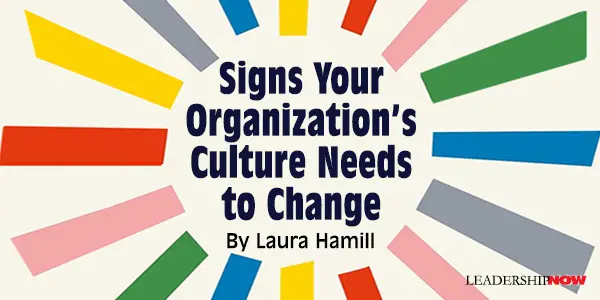
CULTURE has the power to inspire and unite an entire workforce in the service of common goals. It can create meaning and purpose and a positive day-to-day experience while ensuring that the company is well positioned to meet its business objectives. But when an organization’s culture is negative and dysfunctional, it has the opposite effect. A study from MIT/Sloan found that a toxic culture is by far the strongest predictor of employee attrition. Signs that an organization needs to evolve its culture can be obvious — business results are suffering, employees are leaving, or recruitment has become difficult. Let’s say your employee survey results across multiple teams tell you that cross-group collaboration is low despite efforts to encourage employees to collaborate. It would be important to dig into what’s fundamentally valued in the culture that might be reinforcing individual performance (or even reinforcing competitiveness) between employees. When investigating signs that the organization’s culture may be getting in the way of meeting the goals of the business, you need want to: Examine what the data say. Look out for trends and patterns in any data that you have, for example, employee surveys, exit interviews, customer complaints, and online reviews. If the same things come up time and again, dig deeper to look at them from a cultural perspective. Explore recruitment and retention difficulties. Your culture might need more attention if people are leaving in higher numbers than in the past, or if you’re having difficulty attracting new candidates to your organization. Even if the culture isn’t actually hostile or toxic, it can still be one that isn’t thriving — and employees and candidates will vote with their feet. Investigate a lack of employee participation and engagement. If people are showing signs of disengagement — for example, no longer attending company meetings or no longer asking questions — this may be an indication of withdrawal from the culture and a precursor to people leaving. It’s another early sign that you may need to work on your culture. Consider disconnects between leaders and employees. Another big tell is a lack of connection and alignment between leaders and employees, even though there’s been lots of communication. For example, employees might refer to the company and company leadership as “they” rather than saying “we” or “us.” Or leaders have an us versus them mentality when referring to people in the organization, consistently blaming the workforce or a lack of talent for not achieving business results. Another indicator is when leaders don’t engage with or listen to employees. If leaders aren’t role models for the culture, if they blame others rather than taking ownership themselves, it’s a sign that the culture (and the leaders) need to evolve. Are you ready to change? It’s one thing to know that you have a culture problem. It’s a completely different thing to know if the organization is ready to change. Make sure these tactics are in place as you begin to embark on a cultural evolution for your organization: 1. Ensure leaders are the primary voices. The CEO and leadership team must see culture work as critical to the success of the company and be ready to do the work and be the voice of the evolution. Furthermore, they can’t just be talking heads or going through the motions — there must be an authentic commitment from these leaders to do the work. This doesn’t mean that others in the organization can’t also be culture change drivers, but without the CEO and other leaders being involved it will be difficult for the change to be implemented and almost impossible for the change to stick. 2. Have a clear “why.” Because culture feels both personal and deeply rooted, it’s important to have a clear “why” for the culture work. There needs to be a sense of urgency and a clear, meaningful reason for things to change. It’s important to draw explicit connections with the organization’s strategy and purpose. Culture work should always be focused on solving business problems. Be clear about what problems you’re trying to solve through the culture change. 3. Know where you’re starting from. Given that your organization is unique and will start on culture work from your specific place, there are different types of culture work your organization might pursue. You may be trying to understand the current culture. You may be trying to create or form your aspirational culture. You may want to work out how to compare the current culture with the aspirational culture and close the gaps between the two. Or, your culture work may involve making the culture come to life throughout the organization to ensure that the experience of culture is woven throughout the organization. No matter the type of culture work you’re doing, you must be intentional about it. Change is a process that requires intention and time. Culture is complex, elusive, and multifaceted — just like the humans who create it. And just like the humans who create culture, there’s unlimited potential to evolve your understanding of culture and make work better. If the signs are saying your culture needs to change, for your people’s and your company’s sake, don’t ignore them.  
Posted by Michael McKinney at 07:11 AM

Signs Your Organization’s Culture Needs to Change
CULTURE has the power to inspire and unite an entire workforce in the service of common goals. It can create meaning and purpose and a positive day-to-day experience while ensuring that the company is well positioned to meet its business objectives. But when an organization’s culture is negative and dysfunctional, it has the opposite effect. A study from MIT/Sloan found that a toxic culture is by far the strongest predictor of employee attrition. Signs that an organization needs to evolve its culture can be obvious — business results are suffering, employees are leaving, or recruitment has become difficult. Let’s say your employee survey results across multiple teams tell you that cross-group collaboration is low despite efforts to encourage employees to collaborate. It would be important to dig into what’s fundamentally valued in the culture that might be reinforcing individual performance (or even reinforcing competitiveness) between employees. When investigating signs that the organization’s culture may be getting in the way of meeting the goals of the business, you need want to: Examine what the data say. Look out for trends and patterns in any data that you have, for example, employee surveys, exit interviews, customer complaints, and online reviews. If the same things come up time and again, dig deeper to look at them from a cultural perspective. Explore recruitment and retention difficulties. Your culture might need more attention if people are leaving in higher numbers than in the past, or if you’re having difficulty attracting new candidates to your organization. Even if the culture isn’t actually hostile or toxic, it can still be one that isn’t thriving — and employees and candidates will vote with their feet. Investigate a lack of employee participation and engagement. If people are showing signs of disengagement — for example, no longer attending company meetings or no longer asking questions — this may be an indication of withdrawal from the culture and a precursor to people leaving. It’s another early sign that you may need to work on your culture. Consider disconnects between leaders and employees. Another big tell is a lack of connection and alignment between leaders and employees, even though there’s been lots of communication. For example, employees might refer to the company and company leadership as “they” rather than saying “we” or “us.” Or leaders have an us versus them mentality when referring to people in the organization, consistently blaming the workforce or a lack of talent for not achieving business results. Another indicator is when leaders don’t engage with or listen to employees. If leaders aren’t role models for the culture, if they blame others rather than taking ownership themselves, it’s a sign that the culture (and the leaders) need to evolve. Are you ready to change? It’s one thing to know that you have a culture problem. It’s a completely different thing to know if the organization is ready to change. Make sure these tactics are in place as you begin to embark on a cultural evolution for your organization: 1. Ensure leaders are the primary voices. The CEO and leadership team must see culture work as critical to the success of the company and be ready to do the work and be the voice of the evolution. Furthermore, they can’t just be talking heads or going through the motions — there must be an authentic commitment from these leaders to do the work. This doesn’t mean that others in the organization can’t also be culture change drivers, but without the CEO and other leaders being involved it will be difficult for the change to be implemented and almost impossible for the change to stick. 2. Have a clear “why.” Because culture feels both personal and deeply rooted, it’s important to have a clear “why” for the culture work. There needs to be a sense of urgency and a clear, meaningful reason for things to change. It’s important to draw explicit connections with the organization’s strategy and purpose. Culture work should always be focused on solving business problems. Be clear about what problems you’re trying to solve through the culture change. 3. Know where you’re starting from. Given that your organization is unique and will start on culture work from your specific place, there are different types of culture work your organization might pursue. You may be trying to understand the current culture. You may be trying to create or form your aspirational culture. You may want to work out how to compare the current culture with the aspirational culture and close the gaps between the two. Or, your culture work may involve making the culture come to life throughout the organization to ensure that the experience of culture is woven throughout the organization. No matter the type of culture work you’re doing, you must be intentional about it. Change is a process that requires intention and time. Culture is complex, elusive, and multifaceted — just like the humans who create it. And just like the humans who create culture, there’s unlimited potential to evolve your understanding of culture and make work better. If the signs are saying your culture needs to change, for your people’s and your company’s sake, don’t ignore them.  
Posted by Michael McKinney at 07:11 AM
10.17.24

Leading Thoughts for October 17, 2024
IDEAS shared have the power to expand perspectives, change thinking, and move lives. Here are two ideas for the curious mind to engage with: Alden Mills on attitude: “Your attitude is one of the single most important things you can control, and if you are not careful, you will let others influence and sometimes even control your attitude for you. The reason attitude is so critical to your success is that it directly influences how you communicate, collaborate, and contribute. People experience you through your attitude. Your attitude drives your actions and how people act toward you.” Source: Unstoppable Mindset: How to Use What You Have to Get What You Want Sam Chand on taking responsibility: “So, what keeps people from getting to a higher level of leadership? The answer is their inability to accept higher levels of responsibility. Leadership has privileges, but those privileges come with a weighty obligation. A leader’s responsibilities include being a good role model, training others, keeping a good attitude, saying, ‘I will go first,’ volunteering for things outside your purview, being on time, rising with courageous, faith-filled affirmation, holding up your primary leader’s arms, and giving your best. Every day that you show up as a leader you bring a higher level of responsibility. And guess what happens? Whatever you sow, you’ll reap.” Source: 52 Tuesdays With Sam Chand: Powerful Insights to Inspire Your Leadership Journey Look for these ideas every Thursday on the Leading Blog. Find more ideas on the LeadingThoughts index.
Posted by Michael McKinney at 06:24 AM
10.10.24

Leading Thoughts for October 10, 2024
IDEAS shared have the power to expand perspectives, change thinking, and move lives. Here are two ideas for the curious mind to engage with: Erwin McManus on the power of words : “There isn’t a single one of us that has escaped the power of the words spoken into our lives. If words do not have a magical power, they certainly have a metaphysical power. Within our words, we hold the power of life and death. The first words spoken in the book of Genesis are, ‘Let there be light.’ We, too, seem to have the power to create darkness or light. If not in the world around us, certainly in the world within us. It may not be an overstatement to say that we are the sum total of the words that have been spoken into us and that we have allowed to define us.” Source: The Seven Frequencies of Communication: The Hidden Language of Human Connection Elliott Parker on building resilience: “Resilience is the ability of a system to absorb disturbance and still retain its basic function and structure. Resilience is developed and maintained through learning, optionality, and redundancy. Resilience is never the result of top-down, hierarchical management. It is always the result of organic, messy experimentation. Resilience requires a certain degree of inefficiency, randomness, and exploration.” Source: The Illusion of Innovation: Escape "Efficiency" and Unleash Radical Progress Look for these ideas every Thursday on the Leading Blog. Find more ideas on the LeadingThoughts index.
Posted by Michael McKinney at 09:47 AM
10.07.24

The 7 Traps of Path Dependency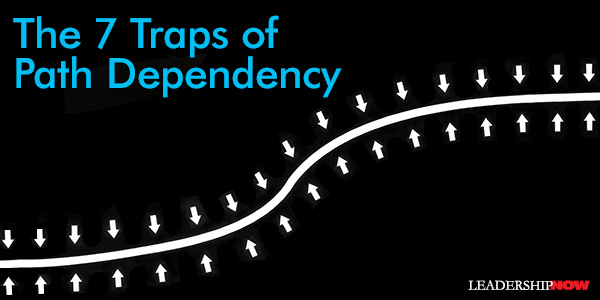
TREND HUNTER CEO Jeremy Gutsche says the most important trait we need for our fast-moving future is the ability to change. He wrote Create the Future + The Innovation Handbook: Tactics for Disruptive Thinking (two books in one) to help us. “We are more dependent on our past decisions than we like to admit. Once a path is set, we often walk down it blindly, failing to question why it was put there to begin with and whether a better path might exist.” Staying relevant doesn’t just happen. It takes work and knowing what we do to sabotage it. Once we get on a path we tend to stay there. It’s stable and comfortable. We have to disrupt ourselves or we overlook or ignore opportunities. We reduce our ability to do just that by falling into some or all of these seven traps. 1. The Subtlety of Opportunity Opportunities rarely look like the obvious, easy move. They usually look like challenges. Success often blinds you to opportunities. “Market leaders consistently miss out on great new ideas because they overestimate their market dominance.” And so, they easily dismiss new ideas. What to do? Gutshe offers some suggestions on how we can make ourselves more open to opportunities. Among them are, assume you are incorrect, reward and encourage dissent, study other markets and get outsiders to suggest ideas you might be missing. 2. Neurological Shortcuts Our brains are designed to be efficient. This can cause us to miss opportunities and resist change, especially in areas where we have expertise. This creates blind spots and limits our creativity. When you perform a task for the first time, your brain needs to figure out what you are trying to do. This results in your brain shooting a spark along a new neural pathway. Once you start practicing something over and over again, your brain decides to make it easier for you by paving a little pathway of myelin. Myelin is a white fatty tissue, and it guides your synapses, making you better and faster. As you master a skill, you start building a LOT of myelin. In fact, 40% of your brain is made up of myelin tissue. Practice creates myelin, which makes you smarter and faster, but it also makes you repetitive, consistent, and dismissive. What to do? Encourage play, ask questions, fund creative hobbies, and host weekly blue-sky meetings, and embrace the mindset of “no bad ideas.” 3. The Ease of Inaction Busyness can cause us to put off change. When we are busy, we prefer stability and simplicity. Our systems often provide the inertia to stay on the path and avoid change. “If you want to reduce your resistance to change, you need to clear the obstacles that block deep thought” and create a sense of urgency. “If you want change to happen, you must begin by igniting a sense of urgency and purpose.” What to do? Simplify the plan, put the customers first and force the discussion of competing alternatives. 4. Optionality The choices we make set us on a path. “We tend to make decisions that get short-term results, not realizing that certain choices can fix us to the path we are on and reduce our future potential. Optionality is about making decisions that increase our future choices.” What choice have you made that placed you in the position you are in today? What to do? Bring together people who would not otherwise interact, give people “permission slips” to fail, fuel audacity, escape your routine, push the limits, and set up a talent exchange to see other perspectives. 5. The Traps of Success Success has its dark side. It can make us complacent, repetitive, and defensive. “As we master any craft, we become loyal, consistent, and disciplined. But when something is new, we are curious, insatiable, and willing to destroy the status quo.” This is a tension—between farmer and hunter—that must be managed. Understand that:
What to do? Be curious, be willing to destroy old ways of doing things, recognize that your greatest strength creates your greatest weakness, ask outsiders for opinions, and simulate starting from scratch. 6. Linear Thinking “Unfortunately, our human brains are not designed for our exponentially evolving world. We understand that our world is changing, but we assume the next interval of change will be similar to the last. We have a very difficult time understanding the compounding impact of change.” Change is a given. What we need to prepare for it the acceleration of change. What to do? Track the amount of change in your market, brainstorm your Super Future, prepare scenarios to disrupt or avoid being disrupted, assume that far-off predictions will happen sooner than you think, compare the present to the past to predict the future. 7. Discomfort vs. Breakthrough A new idea that takes us down a different path requires change. And that makes us feel awkward. We have to learn to be comfortable with discomfort. Getting outside your comfort zone is—well, uncomfortable. What ideas have you ignored that could have put you on a different, better path? To realize your potential, look past the awkwardness of new ideas, train your brain to be more creative, take action, open up your future options, and recognize the blinding power of your own expertise. Track trends in your market, internalize the pace of change, and push your comfort zone—because you are capable of more than you think. 
Posted by Michael McKinney at 09:18 AM
10.03.24

Leading Thoughts for October 3, 2024
IDEAS shared have the power to expand perspectives, change thinking, and move lives. Here are two ideas for the curious mind to engage with: Brian Solis on keeping an open mind: “I don’t know that I’ve ever encountered anyone who self-identifies as ‘close-minded.’ But the fact is, our minds have been built to resist new information, especially when it refutes our prior experience or goes against our beliefs. We tend to surround ourselves with people like us, which fortifies our beliefs. When we’re surrounded by similar beliefs, we’re rarely challenged. Opening our minds up is also hard because it is a form of shifting our identity. When we engage in questioning what we’ve learned from our experiences and interrogating our beliefs, we can feel unmoored. Disruption is inevitable. Either we can let it challenge our experiences and beliefs and inspire us to reshape them or we can dig in and fight from our comfort zones.” Source: Mindshift: Ignite Change, Inspire Action, and Innovate for a Better Tomorrow Brad Stulberg developing rugged yet flexible boundaries: “If you rigidly dig in, hoping to stay the same and trying to insulate yourself from change, then you run the risk of falling apart. But if you are fluid without any boundaries or direction, then it can become quite confusing as to who you even are. When you feel the ground shifting underneath you, when you don’t know your next move, you can ask yourself, How might I move in the direction of may core values? Ruggedness without flexibility is rigidity; flexibility without ruggedness is instability. Only organizations that deliberately cultivate their rugged boundaries and then flexibly apply them have a shot at prospering over the long haul.” Source: Master of Change: How to Excel When Everything Is Changing – Including You Look for these ideas every Thursday on the Leading Blog. Find more ideas on the LeadingThoughts index.
Posted by Michael McKinney at 07:23 AM
10.01.24

First Look: Leadership Books for October 2024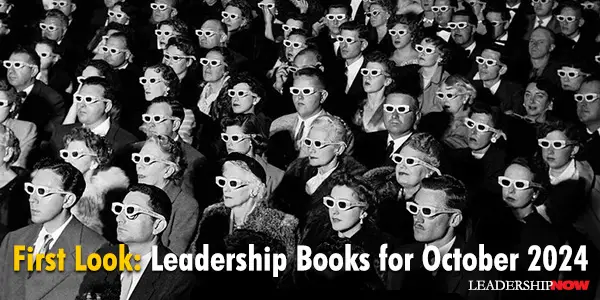
HERE'S A LOOK at some of the best leadership books to be released in October 2024 curated just for you. Be sure to check out the other great titles being offered this month.
As the world navigates the rapid and disruptive effects of AI, climate change, and geopolitical conflicts, the world of work, too, needs to change. Jobs are giving way to skills as the currency of work to ensure a more agile, resilient, and flexible enterprise that cannot just respond but must thrive in the face of these challenges. This pivot from jobs to skills will require us to rethink everything we know about work. Building on his bestselling book Work without Jobs, Ravin Jesuthasan returns, this time with coauthor Tanuj Kapilashrami, an international human resources leader, to provide the framework organizations need to thrive in a world demanding perpetual reinvention.
Written by a leading global expert on human cognition, productive failure, and learning methods, Productive Failure shows you how to design the experience of failing. Research shows that repeated experiences of intriguing, constructive failure can help students (and our own children, and anyone else we lead) develop creativity and learn more deeply. When carefully curated, failure can become a signal for learning, not the noise detracting from it. The result? Learners gain a lifelong readiness to push themselves outside of their comfort zones, using setbacks as launchpads for learning and innovation. The evidence-based principles in this book are powerful, not only in formal schooling contexts, but also for anyone taking charge of and designing their own lifelong learning.
Change isn’t an easy sell. And, in business, pivoting in a new direction requires teams to work together cooperatively. You need to say what they can’t unhear. This compact and actionable guide will get you thinking differently about where change comes from and how to initiate it. By introducing and exploring nine “persuasion proverbs,” Webster highlights the behavioral, cognitive, and psychological principles that underpin lasting change, and offers a powerful alternative to the standard tactics of influence and persuasion.
Outrage is everywhere—on the left and on the right—and many companies have found themselves in the crosshairs. GoFundMe was pressured to cut off funding to protesting truckers in Ottawa. Facebook and other tech companies have been accused of manipulating elections in many countries and by many parties. People are angry with the world—in some cases, rightfully so—and now view companies as they do governments, as targets of their wrath and potential forces for social change. Managing outrage has moved from being an occasional leadership challenge, like handling a PR crisis, to a necessary and critical leadership capability, like strategic thinking or financial acumen. Based on his popular University of Oxford leadership course and case studies on organizations such as IKEA, Nestlé, the Vatican, and others, Karthik Ramanna offers practical steps to make sense of the outrage, work with relevant stakeholders to progress through it, and emerge stronger for it.
As CEO of the Consumer Technology Association, owner and producer of CES, Gary Shapiro has had a front row seat to the launch of nearly every recent major technology. He's seen tech companies rise and fall, and bankrupt entrepreneurs become billionaires. After more than four decades in the industry, he knows that leaders who make it in the tech world have one thing in common: they know how to pivot. Drawing upon detailed case studies, economic theory, and personal experience, Pivot or Die offers a behind-the-scenes look at the development of innovative technology and business strategies. Along the way, Shapiro offers a "pivot" framework for leaders in technology and beyond to stay flexible and agile.
The Seven Frequencies of Communication is a groundbreaking revelation of the hidden language that connects humanity. As a renowned speaker, award-winning author, and coach with a global impact, McManus distills his vast experience in the world of communication into a brand-new understanding of how we speak, hear, and change each other. McManus creates a fresh and vibrant system of seven unique frequencies that liberate us to communicate most effectively. Are you a Maven, a Seer, a Commander, a Professor, a Healer, a Challenger, or a Motivator? When you unlock your frequency, you unleash your potential. The Seven Frequencies of Communication is for everyone who wants their message to be heard. Whether you are a leader, a parent, a CEO, a speaker, a coworker, or a friend—this book is for you.
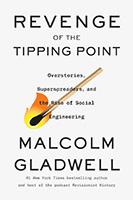 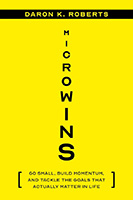 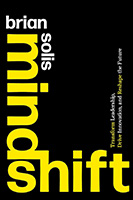 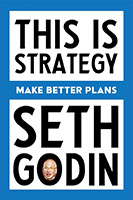
“You can't think well without writing well, and you can't write well without reading well. And I mean that last "well" in both senses. You have to be good at reading, and read good things.” — Paul Graham, Y Combinator co-founder
Posted by Michael McKinney at 09:09 AM
|
BUILD YOUR KNOWLEDGE


How to Do Your Start-Up Right STRAIGHT TALK FOR START-UPS 
Grow Your Leadership Skills NEW AND UPCOMING LEADERSHIP BOOKS 
Leadership Minute BITE-SIZE CONCEPTS YOU CAN CHEW ON 
Classic Leadership Books BOOKS TO READ BEFORE YOU LEAD |
|